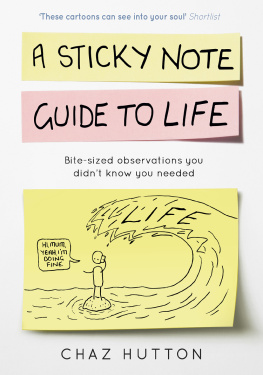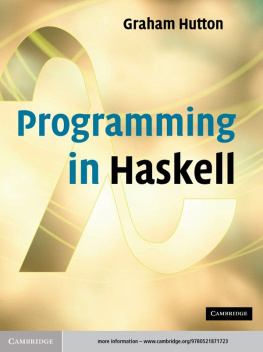Hutton - After a stroke: 300 tips for making life easier
Here you can read online Hutton - After a stroke: 300 tips for making life easier full text of the book (entire story) in english for free. Download pdf and epub, get meaning, cover and reviews about this ebook. year: 2016, publisher: Springer Publishing Company, genre: Children. Description of the work, (preface) as well as reviews are available. Best literature library LitArk.com created for fans of good reading and offers a wide selection of genres:
Romance novel
Science fiction
Adventure
Detective
Science
History
Home and family
Prose
Art
Politics
Computer
Non-fiction
Religion
Business
Children
Humor
Choose a favorite category and find really read worthwhile books. Enjoy immersion in the world of imagination, feel the emotions of the characters or learn something new for yourself, make an fascinating discovery.
After a stroke: 300 tips for making life easier: summary, description and annotation
We offer to read an annotation, description, summary or preface (depends on what the author of the book "After a stroke: 300 tips for making life easier" wrote himself). If you haven't found the necessary information about the book — write in the comments, we will try to find it.
Hutton: author's other books
Who wrote After a stroke: 300 tips for making life easier? Find out the surname, the name of the author of the book and a list of all author's works by series.
After a stroke: 300 tips for making life easier — read online for free the complete book (whole text) full work
Below is the text of the book, divided by pages. System saving the place of the last page read, allows you to conveniently read the book "After a stroke: 300 tips for making life easier" online for free, without having to search again every time where you left off. Put a bookmark, and you can go to the page where you finished reading at any time.
Font size:
Interval:
Bookmark:

AFTER A STROKE

Visit our website at www.demoshealth.com
ISBN: 978-1-936303-96-0
e-book ISBN: 978-1-61705-281-1
Acquisitions Editor: Beth Barry
Compositor: diacriTech
2017 Cleo Hutton
Demos Health is an imprint of Springer Publishing Company, LLC.
All rights reserved. This book is protected by copyright. No part of it may be reproduced, stored in a retrieval system, or transmitted in any form or by any means, electronic, mechanical, photocopying, recording, or otherwise, without the prior written permission of the publisher.
Medical information provided by Demos Health, in the absence of a visit with a health care professional, must be considered as an educational service only. This book is not designed to replace a physicians independent judgment about the appropriateness or risks of a procedure or therapy for a given patient. Our purpose is to provide you with information that will help you make your own health care decisions.
The information and opinions provided here are believed to be accurate and sound, based on the best judgment available to the authors, editors, and publisher, but readers who fail to consult appropriate health authorities assume the risk of injuries. The publisher is not responsible for errors or omissions. The editors and publisher welcome any reader to report to the publisher any discrepancies or inaccuracies noticed.
Library of Congress Cataloging-in-Publication Data
Names: Hutton, Cleo, 1949- author.
Title: After a stroke : 500 tips for living well / by Cleo Hutton.
Description: Second edition. | New York, NY : Demos Medical Publishing,
[2017] | Includes bibliographical references and index.
Identifiers: LCCN 2016024473| ISBN 9781936303960 | ISBN 9781617052811 (ebook)
Subjects: LCSH: Cerebrovascular diseasePopular works.
Classification: LCC RC388.5 .H879 2017 | DDC 616.8/1dc23 LC record
available at https://lccn.loc.gov/2016024473
Special discounts on bulk quantities of Demos Health books are available to corporations, professional associations, pharmaceutical companies, health care organizations, and other qualifying groups. For details, please contact:
Special Sales Department
Demos Medical Publishing
11 West 42nd Street, 15th Floor,
New York, NY 10036
Phone: 800-532-8663 or 212-683-0072;
Fax: 212-941-7842
E-mail:
Printed in the United States of America by McNaughton & Gunn.
16 17 18 19 20 / 5 4 3 2 1
This book is dedicated to my four grandchildren.
You were not yet born when I had the strokes.
Today, I couldnt imagine my life without you.
Contents
Preface
A stroke struck you or someone you love. You have gone through the critical stage of this devastating condition and perhaps even graduated from a hospital rehabilitation program. Now you begin another phase of rehabilitation, as your battle for recovery is showing undeniable progress. Youre going home. The purpose of this book is to give you helpful tips and information about stroke that will serve as necessary artillery to empower you to overcome obstacles in the way of successful healing and move forward with your life.
This book offers more than 500 tips for living well after stroke. The tips and information will help you and your family during stroke recovery. Adapt them to your recovery needs, always challenging yourself with new tasks to accomplish. Use what applies to you and your family.
Every tip is numbered. However, you may want to skip ahead or go back to a part in the book that relates to your particular recovery needs. Your needs will change over time. What works for one individual may not be suitable for another. The tips are not presented in order of importance, so you can jump from section to section to find the tips you need on any given day.
I have had several strokes but remain focused on education, medical insight, adaptability, and new techniques in recovery. My goal in writing this book is to relate to other stroke survivors what I have learned and share the tools and best practices that have helped me in my recovery.
Since the 2005 publication of the first edition, significant advances have been made in public education, medical treatment, brain research, and rehabilitation techniques for stroke. Research on brain neuroplasticityhow we learn, how quickly the brain adaptsis rapidly progressing and informing treatment and recovery.
Check with your physician or therapist prior to trying some of the tips. Have a caregiver or family member observe you until you feel comfortable doing a task yourself. Safety and medical supervision are always paramount in successful recovery.
You can live fully after a stroke.
To get you started on that path, here is some general information about stroke and whats happening in the field.
A stroke happens when the blood supply to part of the brain is interrupted or severely reduced, depriving brain tissue of oxygen and nutrients. Brain cells begin to die within minutes of a stroke, also known as a cerebral vascular accident (CVA). A stroke may be caused by a blocked or narrowed artery (ischemic stroke) or the leaking or bursting of a blood vessel (hemorrhagic stroke). Some people may experience only a temporary interruption of blood flow to their brain, known as a transient ischemic attack (TIA) or mini-stroke.
Ischemic strokes are the most common kind of strokes. Ischemia is the state of reduced blood flow. There are two sub-classes of ischemic stroke: Thrombotic, which happens when a blood clot (thrombus) forms in one of the arteries that supply blood to the brain. This clot may be caused by fatty deposits (plaque) that build up in artery walls causing what is commonly known as hardening of the arteries (atherosclerosis). The second sub-class is embolic, which occurs when a blood clot forms in a different part of your body and is carried through your bloodstream eventually plugging narrow brain arteries. An embolism or embolus is the medical term for this second type of blood clot causing an ischemic stroke.
There are two sub-classes of hemorrhagic stroke, as well. During an intracerebral (inside the brain) hemorrhage, a blood vessel in the brain bursts, spilling into the surrounding brain tissue, which can damage cells throughout the brain. The second sub-class is subarachnoid hemorrhage, in which an artery near the surface of the brain bursts and spills into the space between the surface of the brain and the skull. This bleeding causes a sudden, severe headache.
A hemorrhagic stroke can be caused by any condition that affects the blood vessels, including uncontrolled high blood pressure (hypertension), overtreatment with anticoagulants (blood thinners), trauma to the brain, and weak spots or pouches in the blood vessel walls (aneurysms). Another cause is the rupture of an abnormal web of thin-walled blood vessels (arteriovenous malformation or AVM) present at birth. After, or during, a hemorrhagic stroke the blood vessels in the brain may intermittently widen and narrow (vasospasm), causing further brain cell damage by limiting blood flow. Hemorrhagic strokes are often treated with clipping or coiling procedures, which reduce blood flow to aneurysms or AVMs.
Font size:
Interval:
Bookmark:
Similar books «After a stroke: 300 tips for making life easier»
Look at similar books to After a stroke: 300 tips for making life easier. We have selected literature similar in name and meaning in the hope of providing readers with more options to find new, interesting, not yet read works.
Discussion, reviews of the book After a stroke: 300 tips for making life easier and just readers' own opinions. Leave your comments, write what you think about the work, its meaning or the main characters. Specify what exactly you liked and what you didn't like, and why you think so.

















